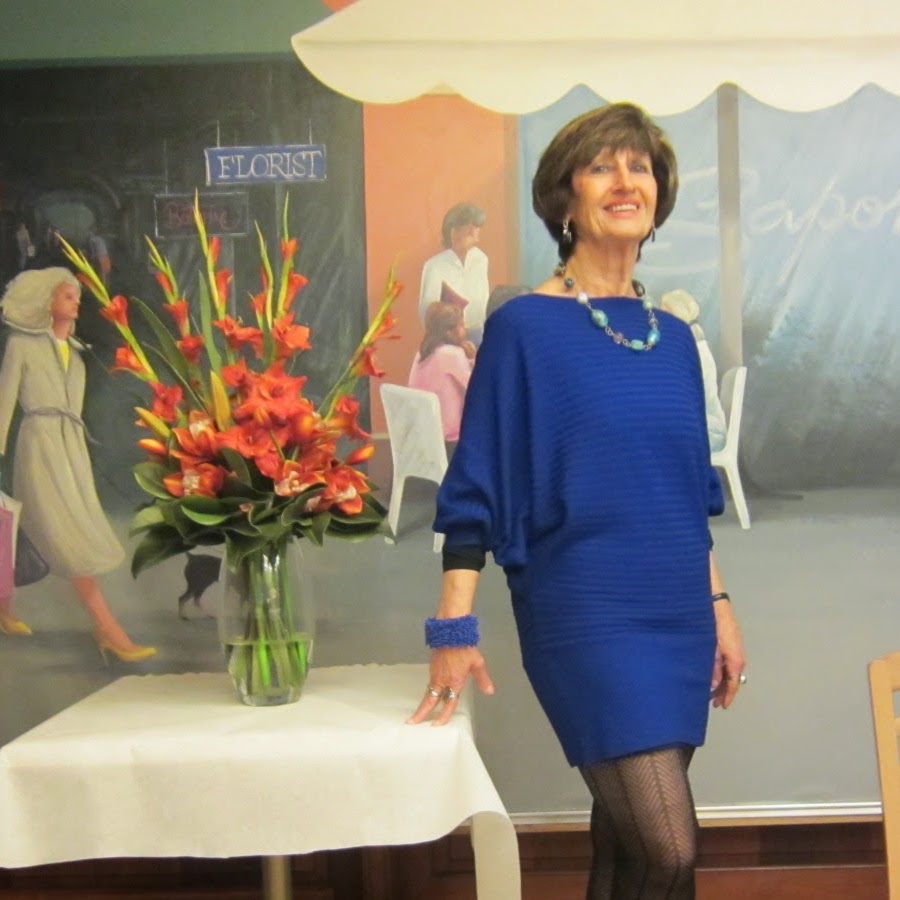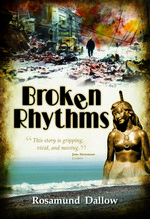 Rosamund Dallow was born in Napier, New Zealand, and moved to Australia in 1966. Her writing career includes several pieces published in Dance Australia, many short stories submitted for competitions, prolific letter writing — some were published in the Sydney Morning Herald. She has published her first novel, Broken Rhythms, a generational saga based on historical and society-changing events over 70 years, from 1903-1975, in Australia and New Zealand.
Rosamund Dallow was born in Napier, New Zealand, and moved to Australia in 1966. Her writing career includes several pieces published in Dance Australia, many short stories submitted for competitions, prolific letter writing — some were published in the Sydney Morning Herald. She has published her first novel, Broken Rhythms, a generational saga based on historical and society-changing events over 70 years, from 1903-1975, in Australia and New Zealand.
The book is now in all New Zealand libraries, including the Otago University and the New Zealand National Libraries, where it is kept in the History Department. Rosamund’s diverse career paths also include professional dancer, broadcaster, teacher and lecturer on Ballet, actor on stage, Radio and TV in New Zealand and Australia, security guard and head of a tourism business. Rosamund travels widely, loves languages, and is currently working on a thriller, a sequel to Broken Rhythms.
Interview
Which book or author has made the biggest impression on you and why?
For me, the book that towers over all others is War and Peace. Everything is there — fully rounded characters, living and breathing — the sweep and impact of the tumultuous times in which they live, and how the destinies of Natasha, Pierre, Andrei and Mary are irrevocably changed. The epic story is totally relevant to all readers and a measuring tape for my own heart and soul.
What was the turning point in your career? How did you get your first big break?
In my writing career, the turning point was the major decision for my first book to make it into a novel, not a memoir. The book is now being sought by libraries and universities in New Zealand for the historical and social content, but that needed to be experienced through the characters. I was too close to several of the people depicted, inhabitants of my birth country, during my early years in New Zealand. Achieving objectivity was a struggle. The distance fiction brought gave clarity to the narrative. I’ve been told that my writing has the sweep of history and the intimacy of empathy, a wonderful comment.
Could you tell us a little about your writing technique: is your routine rigid or relaxed? Where do you look for inspiration?
I tend to concentrate on getting the rhythm of the first chapter and the ending. When I see the direction of a piece, I then brood on the next stage. Further inspiration sometimes comes when I wake up at the magical 3am and scribble ideas and dialogue furiously on a notepad. I do believe in persistently pinning words on the PC screen, storing sights, sounds and quirky occasions that evaporate if not recorded. I think: can this snapshot enliven an occasion, motivate a change or advance the action? Add excitement? I seem to move between being manic and over-relaxed.
How much time did you spend researching the idea for your book, ‘Broken Rhythms’?
From the onset of writing Broken Rhythms research has been a vital component, taking me to places I never expected to go. I began the book four years ago. The complexity of events over 75 years in the book such as World War I, the Great Depression, the Hawkes Bay earthquake and the painful social adjustments following such traumas, made the road to publication a long one.
What is the best piece of writing advice you have been given?
Write, write and keep writing!
What can we expect from the sequel to ‘Broken Rhythms’?
My next book will have a powerful hero, suspense, mateship and a love story begun out of shared fear. It is set in a beautiful country with a traumatic history. More research!
 Excerpt from “Broken Rhythms”, Chapter 6, Earth in Upheaval.
Excerpt from “Broken Rhythms”, Chapter 6, Earth in Upheaval.
It was business as usual on that bright morning in February. Later, reports compiled from witnesses varied. Some spoke of heavy yellow skies, others of pets hiding under furniture, and birds flocking and disappearing, but at mid-morning on this balmy day, the citizens of Napier, Hawke’s Bay, were not looking for omens.
When the earthquake hit at 10.47am with the force of 7.8 on the Richter scale, its epicentre directly beneath the city’s main thoroughfares, Jeffrey was putting the new licence into his pocket and thanking the young clerk attending to him.
The first giant punch upwards from the ground became a roiling, grinding motion. In an instant, every object in the spacious office was flung upwards, outwards, over, and onto the floor in every direction — desk, clerk, pigeonholes stuffed with files, and ink wells which shattered on impact, splattering their contents onto the bodies flung into the altered space, including his own.
There was a roaring and crashing as dust and debris formed a choking blanket. Voices were screaming, moaning and praying. The cacophony of splintering, rending and tearing left Jeffrey momentarily deaf. He’d been lifted by the force of the earthquake and hurled towards the vacant space where the double door had been seconds before. Its ornate glass, now in jagged splinters, littered the heaving floor.
One large piece, the size of a dagger, protruded from the back of a prone woman. Arms outstretched, eyes fixed in horror, she seemed about to speak, but could only gurgle as blood frothed from her gaping mouth.
